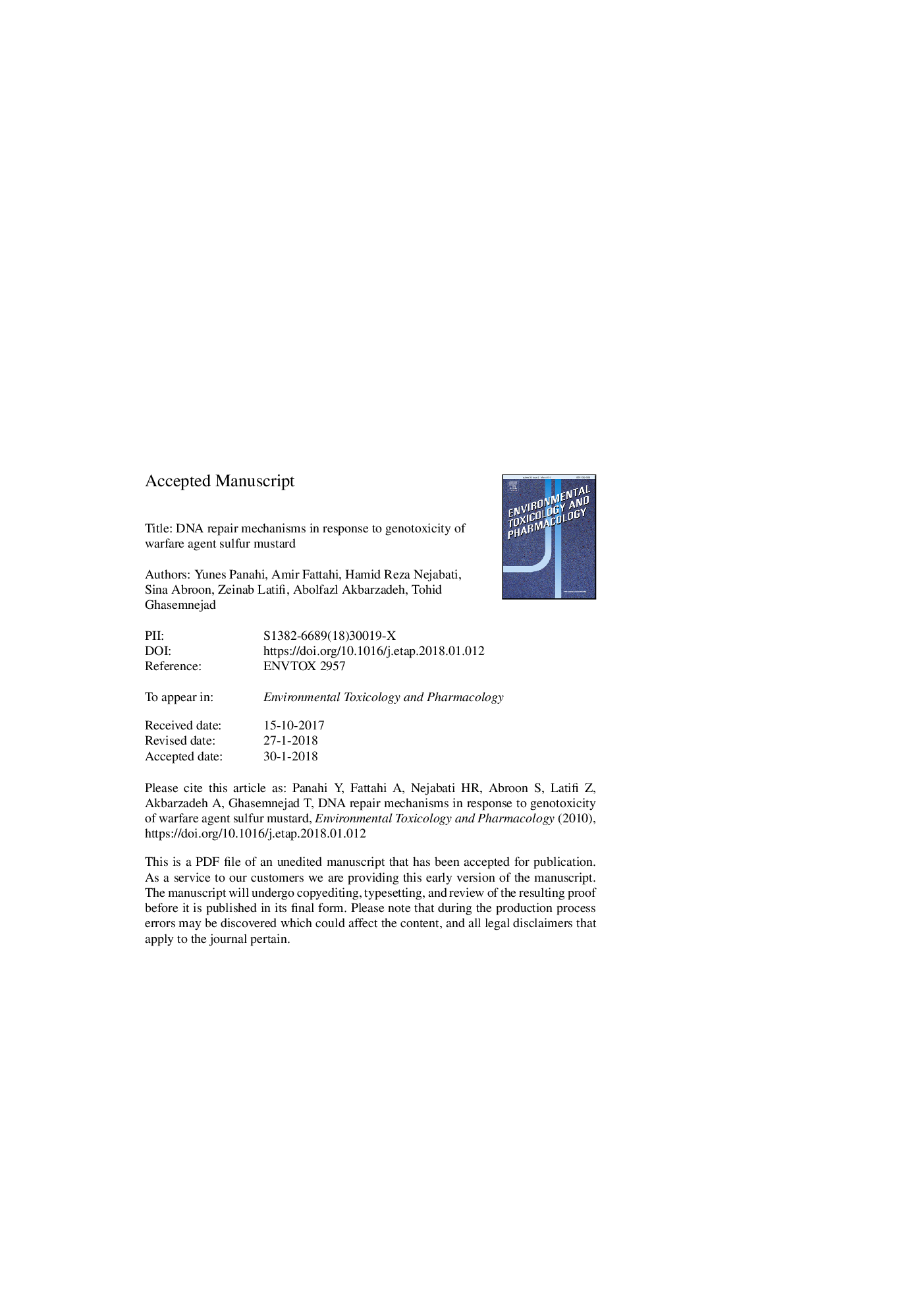| Article ID | Journal | Published Year | Pages | File Type |
|---|---|---|---|---|
| 8545958 | Environmental Toxicology and Pharmacology | 2018 | 26 Pages |
Abstract
Sulfur mustard (SM) is an alkylating agent that causes severe damages to the skin, eyes, and the respiratory system. DNA alkylation is one of the most critical lesions that could lead to monoadducts and cross-links, as well as DNA strand breaks. In response to these adducts, cells initiate a series of reactions to recruit specific DNA repair pathways. The main DNA repair pathways in human cells, which could be involved in the DNA SM-induced DNA damages, are base excision repair (BER), nucleotide excision repair (NER), homologous recombination (HR) and non-homologous end joining (NHEJ). There is, thus, a need for a short review to clarify which damage caused by SM is repaired by which repair pathway. Increasing our knowledge about different DNA repair mechanisms following SM exposure would lay the first step for developing new therapeutic agents to treat people exposed to SM. In this review, we describe the major DNA repair pathways, according to the DNA adducts that can be caused by SM.
Keywords
BERChk1CEEsTFIIHMMRCHK2FANCD2NHEJSSATLSATRCdc25PARP-1DSBataxia telangiectasia mutatedataxia telangiectasia and Rad3 relatedCDKsNERDNA damagecheckpoint kinase 1DNA repairnucleotide excision repairmismatch repairbase excision repairATMcell division cycle 25translesion synthesisSulfur mustarddouble strand breaksnon-homologous end joiningHomologous recombinationpoly (ADP-ribose) polymerase-1cyclin-dependent kinases
Related Topics
Life Sciences
Environmental Science
Health, Toxicology and Mutagenesis
Authors
Yunes Panahi, Amir Fattahi, Hamid Reza Nejabati, Sina Abroon, Zeinab Latifi, Abolfazl Akbarzadeh, Tohid Ghasemnejad,
